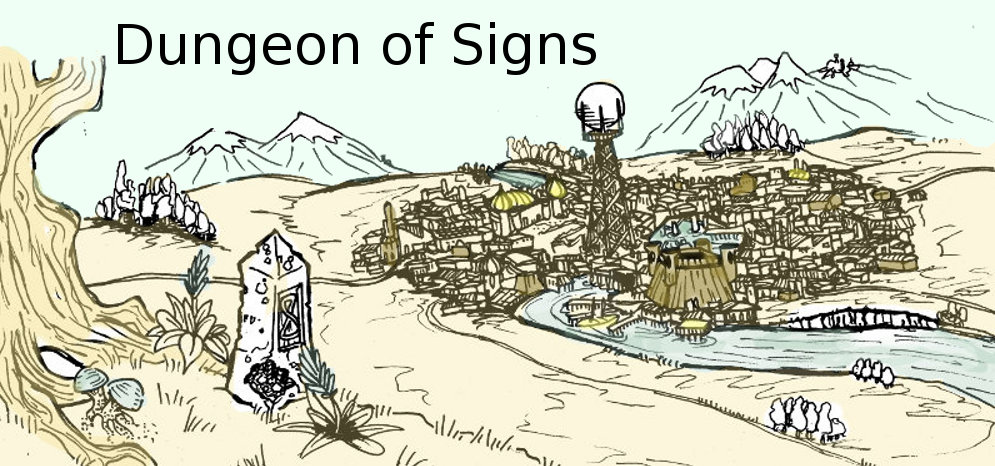The review previous to this one is an in depth review of the adventure module S1 - Tomb of Horrors. Tomb of Horrors was written in 1975 as a tournament adventure for the first Origin's Conference of July 1975. It was not published until 1978, when S1 - Tomb of Horrors appeared. This means that Tomb of Horrors is not the first published piece of adventure content for tabletop roll playing. The first is likely to be "Temple of the Frog", included in the Second Supplement to the original Dungeons & Dragons (OD&D) box set - Blackmoor by Dave Arneson. In the introduction to Blackmoor Gygax credits Arneson as the "innovator of the 'dungeon adventure' concept."
 |
| Yup that's Blackmoor |
I happen to have a copy of Blackmoor, so I can suggest picking up a PDF (even if it's one of the simpler Little Brown Books to find) because the type is tiny (9 point maybe) and written densely to the margins in large blocks of text. The information design is not good...even by the standards of the OD&D box set.
Still this is apparently the first "Dungeon Adventure" which I take to mean a location based exploration adventure as opposed to a siege, battle or a campaign of sieges and battles. This is very interesting from a historical prospective, even if I don't really find much use in game history, and in thinking about writing this review I was somewhat excited to see what is in "Temple of the Frog" that one might style recognize as the ancestor for standards, mechanics and ways for playing and producing location based adventures today.
I read the thing, all 19 pages of confusing, poorly mapped, weirdness and while "Temple of the Frog" is 'interesting' and it really does appear to have set the standard for the way adventures are designed and written, it's a mess. "Temple of the Frog" is not the worst adventure ever written (it's not a linear combat based railroad for one), certainly it's not a good one - especially not today - but it's bad largely in the same way that a Model T Ford is bad compared to a Porsche 911 or a Prius. Most of the right parts are included and one can see that a game could be run from "Temple of the Frog", but it might be clunky and fairly uncomfortable. The pattern that Temple of the Frog creates invites comparison with Tomb of Horrors and a curiosity about what the original, pre-publication 1975 version of Tomb of Horrors looked like.It invites curiousity because while the adventures are practically compatriots they are so very different in mood, theme, scope and approach that they are entirely different species of adventure.




